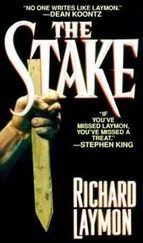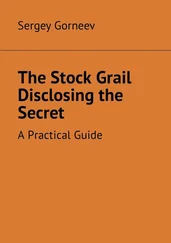Theodore Dreiser - The Stoic
Здесь есть возможность читать онлайн «Theodore Dreiser - The Stoic» весь текст электронной книги совершенно бесплатно (целиком полную версию без сокращений). В некоторых случаях можно слушать аудио, скачать через торрент в формате fb2 и присутствует краткое содержание. Жанр: Классическая проза, на английском языке. Описание произведения, (предисловие) а так же отзывы посетителей доступны на портале библиотеки ЛибКат.
- Название:The Stoic
- Автор:
- Жанр:
- Год:неизвестен
- ISBN:нет данных
- Рейтинг книги:5 / 5. Голосов: 1
-
Избранное:Добавить в избранное
- Отзывы:
-
Ваша оценка:
- 100
- 1
- 2
- 3
- 4
- 5
The Stoic: краткое содержание, описание и аннотация
Предлагаем к чтению аннотацию, описание, краткое содержание или предисловие (зависит от того, что написал сам автор книги «The Stoic»). Если вы не нашли необходимую информацию о книге — напишите в комментариях, мы постараемся отыскать её.
The Stoic — читать онлайн бесплатно полную книгу (весь текст) целиком
Ниже представлен текст книги, разбитый по страницам. Система сохранения места последней прочитанной страницы, позволяет с удобством читать онлайн бесплатно книгу «The Stoic», без необходимости каждый раз заново искать на чём Вы остановились. Поставьте закладку, и сможете в любой момент перейти на страницу, на которой закончили чтение.
Интервал:
Закладка:
For instance, the decision of the United States Supreme Court, killing off Cowperwood’s Combination Traction Company of Chicago, was the first blow to the estate. Four and a half million dollars of his, invested in his Union Traction Company bonds, had been guaranteed by the Combination Traction Company. Now they were faced with years of wrangling in court to decide not only their value but their ownership. It was too much for Aileen. She promptly retired as executrix and turned the problem over to Jamieson. And in consequence, almost two years passed with little or nothing accomplished. In fact, all of this was during the panic of 1907, by reason of which Jamieson, without knowledge of the court, Aileen, or her attorney, turned the bonds in question over to a reorganizing committee.
“If they were sold out, they would be valueless as they are,” Jamieson explained. “The reorganization committee hopes to work out a plan to save the Combination Traction Company.”
Whereupon the reorganization committee deposited the bonds with the Middle Trust Company, the organization interested in combining all of the Chicago railways into one big company. “What did Jamieson get out of it?” was the query. And while the estate had now been in the course of probation for two years in Chicago, no move had been made to settle affairs in New York. The Reciprocal Life Insurance Company, holding a mortgage of $225,000 on the addition to the Fifth Avenue Mansion, along with $17,000 of unpaid interest on this mortgage, started proceedings to collect. And their lawyers, without the knowledge of Aileen or her lawyers, worked out a plan with Jamieson and Frank Cowperwood, Jr., whereby an auction was held and this gallery, along with the pictures in it, was sold. The proceeds of this sale barely covered the claims of the insurance company and the City of New York for unpaid water bills and taxes amounting to around $30,000. To add to all this, Aileen and her lawyers appealed to the Probate Court in Chicago to have Jamieson removed as executor.
In sum, as Aileen informed Judge Severing:
“It has been all talk and no money ever since my husband’s death. Mr. Jamieson talked pleasantly about money and was a good one at making promises, but I was never able to get much real money out of him. When I demanded it directly, he would say there wasn’t any. I have lost faith in him and have come to mistrust him.”
She then related to the court how he had transferred $4,500,000 worth of bonds without her knowledge; how he had arranged for an auction of the art gallery, which was sold for the sum of $277,000, whereas it was valued at $400,000; how he had charged her $1500 collection fee when he had already been paid as executor; and how he had refused her attorney access to the books of the estate.
“When Mr. Jamieson asked me to sell my house and art collection,” she concluded, “and pay him 6 per cent on the transaction, I simply told him I wouldn’t do it. He threatened to blow me higher than Gilroy’s kite if I didn’t.”
The hearing was adjourned for three weeks.
“It is a case of a woman meddling in things she does not understand,” observed Frank A. Cowperwood, Jr.
Thus, while Aileen was attempting to remove Jamieson as executor in the Probate Court in Chicago, Jamieson, after three years of inaction in New York, was applying for ancillary papers there. However, Aileen’s move brought up the question of his fitness, which caused Surrogate Monahan to postpone action for fifteen days to show cause why he should or should not be granted ancillary papers. At the same time, in Chicago, Jamieson, replying to Judge Severing on the charges of Aileen, insisted that he had done no wrong and had never received a dime illegally. Rather, he asserted, he had done much to preserve the estate.
However, Judge Severing, refusing to remove Jamieson as executor, remarked:
“On the question of the widow’s award, an executor who would charge a percentage for the collection of her award, in addition to his fee from the whole estate, and who would be so forgetful of his duties, ought to be removed, it is true. But it is doubtful if I have the power to remove for that cause alone.”
Whereupon Aileen started plans for an appeal to the Supreme Court.
At this point, however, the London Underground Company brought suit in New York in the United States Circuit Court, to collect $800,000 due them. They did not question the solvency of the estate, although authoritative statements did show some $3,000,000 had vanished into thin air in the process of litigation. The Court appointed one William H. Cunningham as receiver in connection with this suit, and this receiver, although Aileen was ill of pneumonia at the time, proceeded to place guards on duty at the Fifth Avenue property, and three days later arranged for a three-day auction of pictures, rugs, and tapestries to meet the claim of the London Underground. The guards were on hand twenty-four hours a day to insure against disappearance of any portion of the property that was to be auctioned. They roamed over the premises, to the great prejudice of orderly management of the household, and in defiance of the right of possession and occupancy.
Charles Day, one of Aileen’s lawyers, submitted to the court that the proceeding was one of the worst pieces of judicial tyranny ever attempted in this country; that it was purely a conspiracy to get into the house by illegal means, for the purpose of forcing a sale of the house and pictures and destroying Cowperwood’s intention and desire to leave the mansion and its contents as a museum for the public.
However, at the same time that her New York attorneys were trying to prevent the temporary receivership being made permanent, her lawyers in Chicago were attempting to have a receiver appointed there for the entire estate.
A clear title to the additional art gallery, sold as a result of the foreclosure proceedings of the Reciprocal Life Insurance Company, had never been obtained, and after four months the insurance company filed a suit against Receiver Cunningham and against the title company which refused to take title to the art gallery.
In addition, while the reorganization committee of Chicago capitalists were working on a plan with representatives of the House of Brenton Diggs, the bondholders of the three underlying companies demanded that bills of foreclosure be filed. Contending that the Cook County Court had jurisdiction over all of the Cowperwood property, Aileen’s lawyers asserted that the Circuit Court had no jurisdiction. The judge of the said Circuit Court admitted as much by announcing that it would withdraw as soon as Jamieson succeeded in taking charge of the New York property.
However, five months following Aileen’s appeal to The United States Circuit Court of Appeals, a two-to-one decision was reached, which made permanent the temporary receivership of William H. Cunningham. Nonetheless, a dissenting judge contended that the Federal Court could not meddle in probate matters, which were the business of the State. The agreeing judges, on the other hand, claimed the receiver should remain until a reasonable time had elapsed—as judged by the Circuit Court—for creditors to ask the Surrogate Court to appoint an administrator, at which time they would turn over the property to him. At the same time, a temporary injunction preventing Jamieson from applying for ancillary letters was dissolved.
And now there were endless delays, courts, claims to be satisfied, and decisions to be made. And opposed to these, a legally uninformed widow, whose total supply of money, left her by her dead husband, was being used in defence of her complicated rights. And lying ill, her health completely shattered, and her actual means now dangerously low.
Therefore, Aileen’s lawyers, together with Jamieson’s lawyers, and the legal representatives of the London Underground, arranged a settlement whereby she would receive $800,000 in lieu of her dower rights, and as a part of her personal estate due her. A petition was filed in the Probate Court in Chicago for confirmation of this unrecorded agreement.
Читать дальшеИнтервал:
Закладка:
Похожие книги на «The Stoic»
Представляем Вашему вниманию похожие книги на «The Stoic» списком для выбора. Мы отобрали схожую по названию и смыслу литературу в надежде предоставить читателям больше вариантов отыскать новые, интересные, ещё непрочитанные произведения.
Обсуждение, отзывы о книге «The Stoic» и просто собственные мнения читателей. Оставьте ваши комментарии, напишите, что Вы думаете о произведении, его смысле или главных героях. Укажите что конкретно понравилось, а что нет, и почему Вы так считаете.









